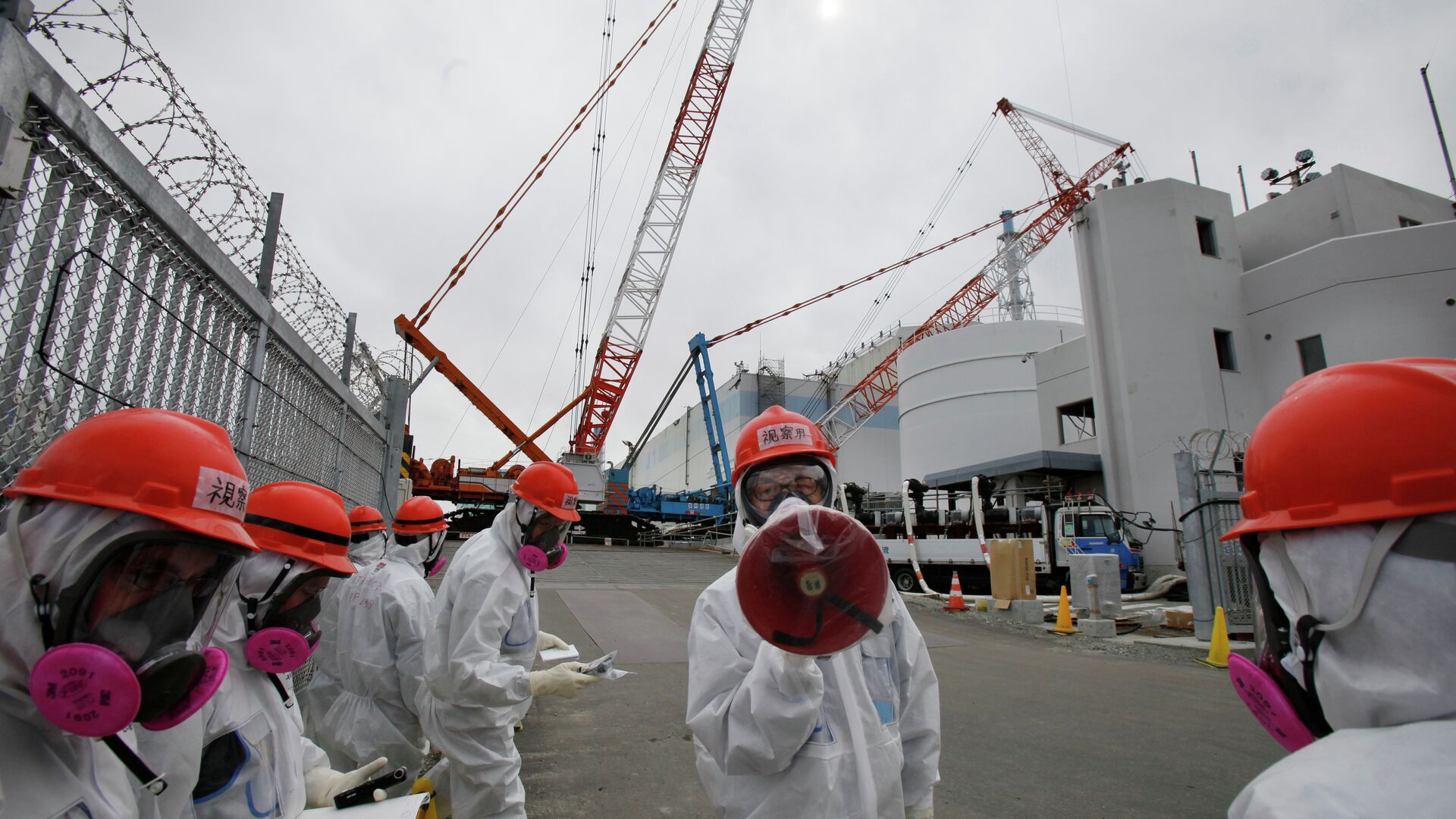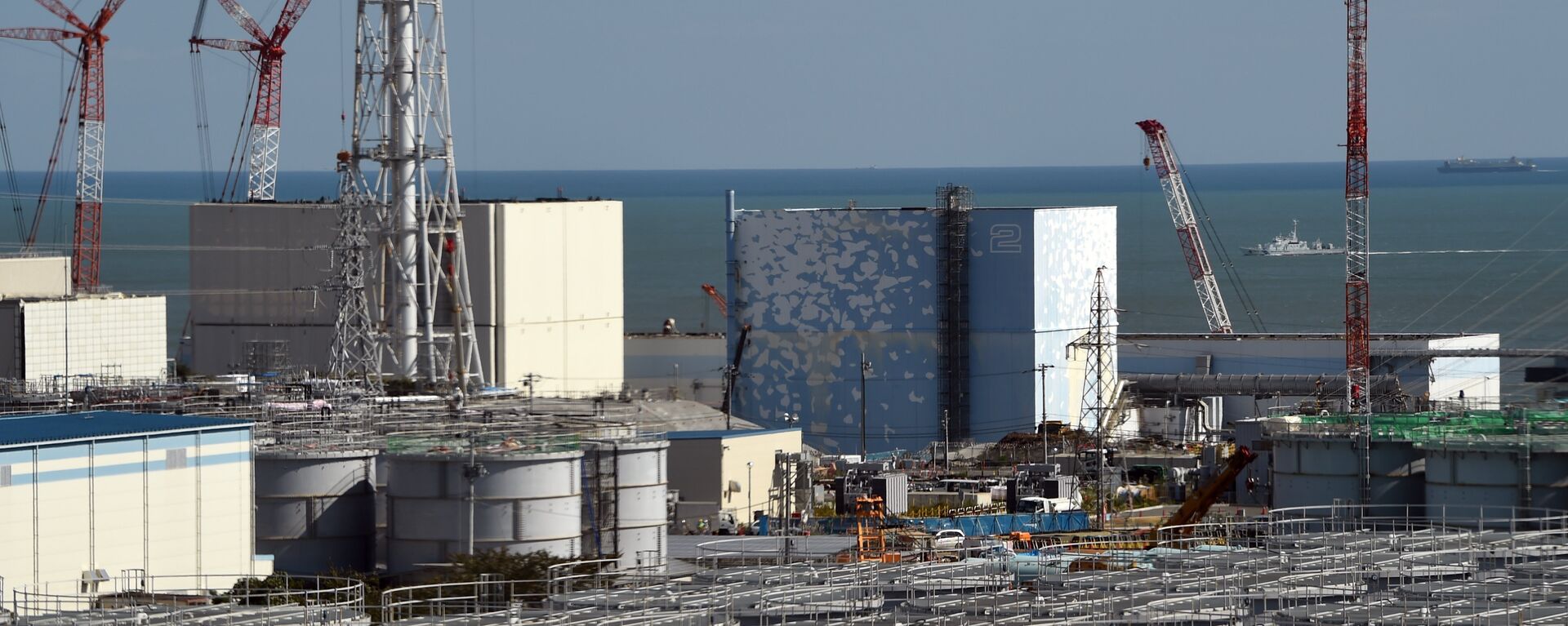https://sputnikglobe.com/20230825/ocean-samples-within-permitted-limit-after-fukushima-water-release-1112898743.html
Ocean Samples Within Permitted Limit After Fukushima Water Release
Ocean Samples Within Permitted Limit After Fukushima Water Release
Sputnik International
The analysis of ocean samples taken after the release of treated water from the Fukushima-1 nuclear power plant (NPP) has shown that tritium concentration remained within permitted limits, the Japanese Ministry of Economy, Trade and Industry said on Friday.
2023-08-25T19:14+0000
2023-08-25T19:14+0000
2023-08-25T19:14+0000
asia
japan
fukushima
tokyo electric power company (tepco)
fukushima daiichi nuclear power plant
nuclear disaster
nuclear power plant
https://cdn1.img.sputnikglobe.com/img/102217/11/1022171113_0:272:5440:3332_1920x0_80_0_0_1a190c695b92c6198cd9c5b939f22078.jpg
"After the start of discharge, [plant's operator] TEPCO sampled seawater at 10 locations within 3 km [1.9 miles] of the Fukushima Daiichi Nuclear Power Plant and quickly measured tritium concentration. As a result, the tritium concentration was below the detection limit, confirming that there was no unusual situation," the ministry stated. On Thursday, Japan started dumping the treated water from the Fukushima NPP into the Pacific Ocean, having diluted it with sea water in advance. TEPCO claimed to have purified the water of all radionuclides except tritium, which was still within the permitted limit. Tokyo announced earlier in the year that it had to discharge the treated water as it urgently needed to free up space at the disabled NPP. The move faced criticism from a number of countries, including China, South Korea and North Korea, who fear radioactive contamination. The International Atomic Energy Agency said that Tokyo's activities were consistent with international safety standards and that the wastewater would have a negligible radiological impact on people and the environment. In March 2011, the Fukushima NPP had three of its reactors melt down after the nation was shaken by a magnitude 9 earthquake followed by a massive tsunami. Fukushima is considered the worst nuclear disaster since the Chernobyl accident in 1986.
https://sputnikglobe.com/20230824/russian-watchdog-monitoring-fish-products-from-japan-says-no-contaminated-goods-allowed-1112849455.html
japan
fukushima
Sputnik International
feedback@sputniknews.com
+74956456601
MIA „Rossiya Segodnya“
2023
Sputnik International
feedback@sputniknews.com
+74956456601
MIA „Rossiya Segodnya“
News
en_EN
Sputnik International
feedback@sputniknews.com
+74956456601
MIA „Rossiya Segodnya“
Sputnik International
feedback@sputniknews.com
+74956456601
MIA „Rossiya Segodnya“
fukushima nuclear power plant, water discharge, fukushima npp, tokyo electric power company, nuclear disaster, contaminated water, radioactive water, treated water, treated water discharge, radiological impact, radioactive contamination, tritium
fukushima nuclear power plant, water discharge, fukushima npp, tokyo electric power company, nuclear disaster, contaminated water, radioactive water, treated water, treated water discharge, radiological impact, radioactive contamination, tritium
Ocean Samples Within Permitted Limit After Fukushima Water Release
MOSCOW (Sputnik) - The analysis of ocean samples taken after the release of treated water from the Fukushima-1 nuclear power plant (NPP) has shown that tritium concentration remained within permitted limits, the Japanese Ministry of Economy, Trade and Industry said on Friday.



